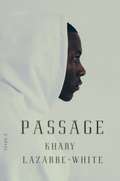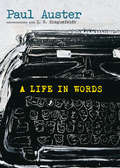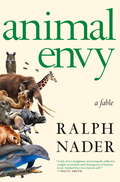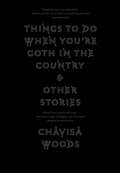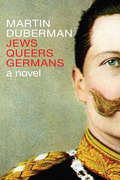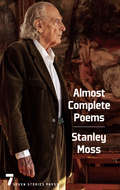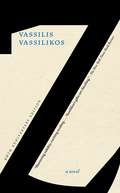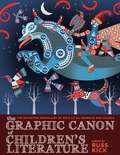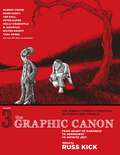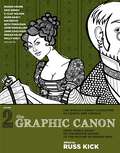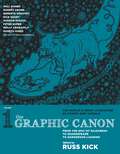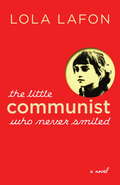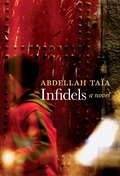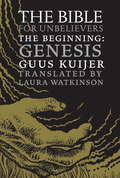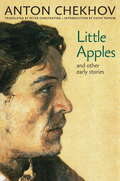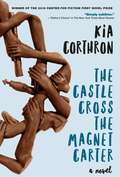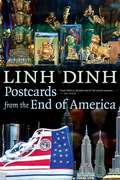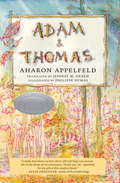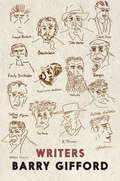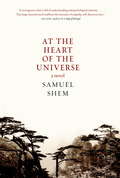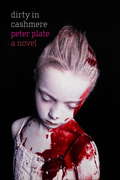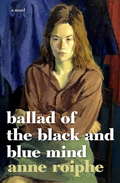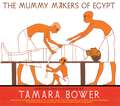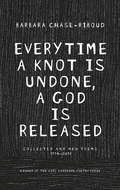- Table View
- List View
Passage
by Khary Lazarre-White"In [Lazarre-White's] world, mysticism and madness walk hand in hand with the waking reality of so many young Black men in America, a reality that by any rational measure is itself insane." --Susan L. TaylorPassage tells the story of Warrior, a young black man navigating the snowy winter streets of Harlem and Brooklyn in 1993. Warrior is surrounded by deep family love and a sustaining connection to his history, bonds that arm him as he confronts the urban forces that surround him--both supernatural and human--including some that seek his very destruction. For Warrior and his peers, the reminders that they, as black men, aren't meant to be fully free, are everywhere. The high schools are filled with teachers who aren't qualified and don't care as much about their students' welfare as that they pass the state exams. Getting from point A to point B usually means eluding violence, and possibly death, at the hands of the "blue soldiers" and your own brothers. Making it home means accepting that you may open the door to find that someone you love did not have the same good fortune. Warrior isn't even safe in his own mind. He's haunted by the spirits of ancestors and of the demons of the system of oppression. Though the story told in Passage takes place in 1993, there is a striking parallel between Warrior's experience and the experiences of black male youth today, since nothing has really changed. Every memory in the novel is the memory of thousands of black families. Every conversation is a message both to those still in their youth and those who left their youth behind long ago. Passage is a novel for then and now.
A Life in Words: In Conversation with I. B. Siegumfeldt
by Paul Auster I. B. SiegumfeldtAn inside look into Paul Auster's art and craft, the inspirations and obsessions, mesmerizing and dramatic in turn.A remarkably candid, and often surprisingly dramatic, investigation into one writer's art, craft, and life, A Life in Words is rooted in three years of dialogue between Auster and Professor I. B. Siegumfeldt, starting in 2011, while Siegumfeldt was in the process of launching the Center for Paul Auster Studies at the University of Copenhagen. It includes a number of surprising disclosures, both concerning Auster's work and about the art of writing generally. It is a book that's full of surprises, unscripted yet amounting to a sharply focused portrait of the inner workings of one of America's most productive and successful writers, through all twenty-one of Auster's narrative works and the themes and obsessions that drive them.
Animal Envy
by Ralph NaderRalph Nader's newest work of the imagination, Animal Envy, is a fable about the kinds of intelligences that are all around us in other animals. What would animals tell us—about themselves, about us—if there were a common language among all animal species? A bracingly simple idea, one that has been used before in books like George Orwell's Animal Farm and E. B. White's Charlotte's Web among others, but never like this. In Animal Envy, Ralph Nader proposes, quite plausibly, that a programmer has created a "digital translation" app whereby animals of different species, from insects to whales, can speak to one another, and through a "hyper-advanced converter" these animals can then also speak, both collectively and individually, to humans. It is decided that there will be a global assembly. It will be called "The Great Talkout." Humans are persuaded to reserve 100 hours of network coverage so The Great Talkout may begin and will be viewed by humans everywhere, in all human languages, as well as all animal languages. The narrative that ensues is deeply felt and powerfully informed. Just as he did when he wrote Only the Super-Rich Can Save Us, Nader shows here that his visionary genius knows no limits.From the Hardcover edition.
Things to Do When You're Goth in the Country: and Other Stories
by Chavisa Woods<P> Things to Do When You're Goth in the Country paints a vivid image of the bizarre characters that live on the fringes in America’s heartland. They don't do what you expect them to do. These aren't typical stories of triumph over adversity, but something completely other. <P> The eight stories in this literary collection present a brilliantly surreal and sardonic landscape and language, and offer a periscope into the heart of the rural poor. Among the singular characters, you'll meet: a “zombie” who secretly resides in a local cemetery; a queer teen goth who is facing ostracism from her small town evangelical church; a woman who leaves New York City once a year to visit her little brothers in the backwoods Midwest, only to discover they’ve been having trouble with some meth dealers and UFOs that trouble the area. <P>In the backdrop of all the stories are the endless American wars and occupations, overshadowed, for these characters, by the many early deaths of their friends and family, that occur regularly for a whole host of reasons.
Jews Queers Germans: A Novel
by Martin DubermanA breathtaking historical novel that recreates the intimate milieu around Germany's Kaiser Wilhelm from 1907 through the 1930s, a period of great human suffering and destruction and also of enormous freedom and creativity, a time when the remnants and artifices of the old word still mattered, and yet when art and the social sciences were pirouetting with successive revolutions in thought and style. Set in a time when many men in the upper classes in Europe were gay, but could not be so publicly, Jews Queers Germans revolves around three men: Prince Philipp von Eulenburg, Kaiser Wilhelm II's closest friend, who becomes the subject of a notorious 1907 trial for homosexuality; Magnus Hirschfeld, a famed, Jewish sexologist who gives testimony at the trial; and Count Harry Kessler, a leading proponent of modernism, and the keeper of a famous set of diaries which lay out in intimate detail the major social, artistic and political events of the day and allude as well to his own homosexuality. The central theme here is the gay life of a very upper crust intellectual milieu that had a real impact on the major political upheavals that would shape the modern world forever after.From the Trade Paperback edition.
Almost Complete Poems
by Stanley MossMoss is oceanic: his poems rise, crest, crash, and rise again like waves. His voice echoes the boom of the Old Testament, the fluty trill of Greek mythology, and the gongs of Chinese rituals as he writes about love, nature, war, oppression, and the miracle of language. He addresses the God of the Jews, of the Christians, and of the Muslims with awe and familiarity, and chants to lesser gods of his own invention. In every surprising poem, every song to life, beautiful life, Moss, by turns giddy and sorrowful, expresses a sacred sensuality and an earthy holiness. Or putting it another way: here is a mind operating in open air, unimpeded by fashion or forced thematic focus, profoundly catholic in perspective, at once accessible and erudite, inevitably compelling. All of which is to recommend Moss's ability to participate in and control thoroughly these poems while resisting the impulse to center himself in them. This differentiates his beautiful work from much contemporary breast-beating. Moss is an artist who embraces the possibilities of exultation, appreciation, reconciliation, of extreme tenderness. As such he lays down a commitment to a common, worldly morality toward which all beings gravitate.
Z, 50th Anniversary Edition
by Marilyn Calmann Vassilis VassilikosA progressive parliamentary deputy is scheduled to appear at a political rally. Meanwhile, local political bosses plot his assassination. Thugs are recruited to disrupt the rally. Rumors begin to spread. But the forces already set in motion are irresistible. Z is the story of a crime, a time, a place, and people transformed by events.Z was published in Greece in 1966, and banned there one year later. It is based on an actual political assassination in 1963 in Salonika. The victim was Gregory Lambrakis, a socialist legislator and outspoken critic of the government. But Lambrakis's killers could not have anticipated the public response. His funeral became a political event; by the time the cortege reached Athens, 400,000 people were following the coffin in silence. In the nation's capital, the letter Z suddenly appeared on walls, sidewalks, posters--everywhere. Z stands for the Greek verb zei, "he lives."From the Trade Paperback edition.
The Graphic Canon of Children's Literature: The World's Greatest Kid's Lit as Comics and Visuals (The Graphic Canon Series)
by Russ KickThe original three-volume anthology The Graphic Canon presented the world's classic literature--from ancient times to the late twentieth century--as eye-popping comics, illustrations, and other visual forms. In this follow-up volume, young people's literature through the ages is given new life by the best comics artists and illustrators. Fairy tales, fables, fantastical adventures, young adult novels, swashbuckling yarns, your favorite stories from childhood and your teenage years . . . they're all here, in all their original complexity and strangeness, before they were censored or sanitized.
The Graphic Canon, Vol. 3: From Heart of Darkness to Hemingway to Infinite Jest The Definitive Anthology of the World's Great Literature as Comics and Visuals (The Graphic Canon Series)
by Russ KickNOW A NEW YORK TIMES BESTSELLER!Publisher's Weekly "Best Summer Books of 2013"The Daily Beast's "Brainy Summer Beach Reads"The classic literary canon meets the comics artists, illustrators, and other artists who have remade reading in Russ Kick's magisterial, three-volume, full-color The Graphic Canon, volumes 1, 2, and 3.Volume 3 brings to life the literature of the end of the 20th century and the start of the 21st, including a Sherlock Holmes mystery, an H.G. Wells story, an illustrated guide to the Beat writers, a one-act play from Zora Neale Hurston, a disturbing meditation on Naked Lunch, Rilke's soul-stirring Letters to a Young Poet, Anaïs Nin's diaries, the visions of Black Elk, the heroin classic The Man With the Golden Arm (published four years before William Burroughs' Junky), and the postmodernism of Thomas Pynchon, David Foster Wallace, Kathy Acker, Raymond Carver, and Donald Barthelme.The towering works of modernism are here--T.S. Eliot's "The Love Song of J. Alfred Prufrock" and "The Waste Land," Yeats's "The Second Coming" done as a magazine spread, Heart of Darkness, stories from Kafka, The Voyage Out by Virginia Woolf, James Joyce's masterpiece, Ulysses, and his short story "Araby" from Dubliners, rare early work from Faulkner and Hemingway (by artists who have drawn for Marvel), and poems by Gertrude Stein and Edna St. Vincent Millay.You'll also find original comic versions of short stories by W. Somerset Maugham, Flannery O'Connor, and Saki (manga style), plus adaptations of Lolita (and everyone said it couldn't be done!), The Age of Innocence, Siddhartha and Steppenwolf by Hermann Hesse, "The Negro Speaks of Rivers" by Langston Hughes, One Flew Over the Cuckoo's Nest, Last Exit to Brooklyn, J.G. Ballard's Crash, and photo-dioramas for Animal Farm and The Wonderful Wizard of Oz. Feast your eyes on new full-page illustrations for 1984, Brave New World, Waiting for Godot, One Hundred Years of Solitude,The Bell Jar, On the Road, Lord of the Flies, The Wind-Up Bird Chronicle, and three Borges stories.Robert Crumb's rarely seen adaptation of Nausea captures Sartre's existential dread. Dame Darcy illustrates Cormac McCarthy's masterpiece, Blood Meridian, universally considered one of the most brutal novels ever written and long regarded as unfilmable by Hollywood. Tara Seibel, the only female artist involved with the Harvey Pekar Project, turns in an exquisite series of illustrations for The Great Gatsby. And then there's the moment we've been waiting for: the first graphic adaptation from Kurt Vonnegut's masterwork, Slaughterhouse-Five. Among many other gems.
The Graphic Canon, Vol. 2: From "Kubla Khan" to the Bronte Sisters to The Picture of Dorian Gray (The Graphic Canon Series)
by Russ KickThe Graphic Canon, Volume 2 gives us a visual cornucopia based on the wealth of literature from the 1800s. Several artists—including Maxon Crumb and Gris Grimly—present their versions of Edgar Allan Poe&’s visions. The great American novel Huckleberry Finn is adapted uncensored for the first time, as Twain wrote it. The bad boys of Romanticism—Shelley, Keats, and Byron—are visualized here, and so are the Brontë sisters. We see both of Coleridge&’s most famous poems: &“Kubla Khan&” and &“The Rime of the Ancient Mariner&” (the latter by British comics legend Hunt Emerson). Philosophy and science are ably represented by ink versions of Nietzsche&’sThus Spake Zarathustra and Darwin&’s On the Origin of Species.Frankenstein, Moby-Dick, Les Misérables, Great Expectations, Middlemarch, Anna Karenina, Crime and Punishment (a hallucinatory take on the pivotal murder scene), Thoreau&’s Walden (in spare line art by John Porcellino of King-Cat Comics fame), &“The Drunken Boat&” by Rimbaud, Leaves of Grass by Whitman, and two of Emily Dickinson&’s greatest poems are all present and accounted for. John Coulthart has created ten magnificent full-page collages that tell the story of The Picture of Dorian Gray by Oscar Wilde. And Pride and Prejudice has never looked this splendiferous!This volume is a special treat for Lewis Carroll fans. Dame Darcy puts her unmistakable stamp on—what else?—the Alice books in a new 16-page tour-de-force, while a dozen other artists present their versions of the most famous characters and moments from Wonderland. There&’s also a gorgeous silhouetted telling of &“Jabberwocky,&” and Mahendra&’s Singh&’s surrealistic take on &“The Hunting of the Snark.&”Curveballs in this volume include fairy tales illustrated by the untameable S. Clay Wilson, a fiery speech from freed slave Frederick Douglass (rendered in stark black and white by Seth Tobocman), a letter on reincarnation from Flaubert, the Victorian erotic classic Venus in Furs, the drug classic The Hasheesh Eater, and silk-screened illustrations for the ghastly children&’s classic Der Struwwelpeter. Among many other canonical works.
The Graphic Canon, Vol. 1: From the Epic of Gilgamesh to Shakespeare to Dangerous Liaisons (The Graphic Canon Series)
by Russ KickTHE GRAPHIC CANON (Seven Stories Press) is a gorgeous, one-of-a-kind trilogy that brings classic literatures of the world together with legendary graphic artists and illustrators. There are more than 130 illustrators represented and 190 literary works over three volumes—many newly commissioned, some hard to find—reinterpreted here for readers and collectors of all ages.Volume 1 takes us on a visual tour from the earliest literature through the end of the 1700s. Along the way, we're treated to eye-popping renditions of the human race's greatest epics: Gilgamesh, The Iliad, The Odyssey (in watercolors by Gareth Hinds), The Aeneid, Beowulf, and The Arabian Nights, plus later epics The Divine Comedy and The Canterbury Tales (both by legendary illustrator and graphic designer Seymour Chwast), Paradise Lost, and Le Morte D'Arthur. Two of ancient Greece's greatest plays are adapted—the tragedy Medea by Euripides and Tania Schrag&’s uninhibited rendering of the very bawdy comedy Lysistrata by Aristophanes (the text of which is still censored in many textbooks). Also included is Robert Crumb&’s rarely-seen adaptation of James Boswell&’s London Journal, filled with philosophical debate and lowbrow debauchery.Religious literature is well-covered and well-illustrated, with the Books of Daniel and Esther from the Old Testament, Rick Geary&’s awe-inspiring new rendition of the Book of Revelation from the New Testament, the Tao te Ching, Rumi&’s Sufi poetry, Hinduism&’s Mahabharata, and the Mayan holy book Popol Vuh, illustrated by Roberta Gregory. The Eastern canon gets its due, with The Tale of Genji (the world&’s first novel, done in full-page illustrations reminiscent of Aubrey Beardsley), three poems from China&’s golden age of literature lovingly drawn by pioneering underground comics artist Sharon Rudahl, the Tibetan Book of the Dead, a Japanese Noh play, and other works from Asia.Two of Shakespeare&’s greatest plays (King Lear and A Midsummer Night&’s Dream) and two of his sonnets are here, as are Plato&’s Symposium, Gulliver&’s Travels, Candide, A Vindication of the Rights of Woman, Renaissance poetry of love and desire, and Don Quixote visualized by the legendary Will Eisner.Some unexpected twists in this volume include a Native American folktale, an Incan play, Sappho&’s poetic fragments, bawdy essays by Benjamin Franklin, the love letters of Abelard and Heloise, and the decadent French classic Dangerous Liaisons, as illustrated by MollyCrabapple. Edited by Russ Kick, The Graphic Canon is an extraordinary collection that will continue with Volume 2: "Kubla Khan" to the Bronte Sisters to The Picture of Dorian Gray in Summer 2012, and Volume 3: From Heart of Darkness to Hemingway to Infinite Jest in Fall 2012. A boxed set of all three volumes will also be published in Fall 2012.
The Little Communist Who Never Smiled
by Lola Lafon Nick CaistorAn award-winning novel powerfully re-imagines a childhood in the spotlight of history, politics, and destiny. Montreal 1976. A fourteen-year-old girl steps out onto the floor of the Montreal Forum and into history. Twenty seconds on uneven bars is all it takes for Nadia Comaneci, the slight, unsmiling child from Communist Romania, to etch herself into the collective memory. The electronic scoreboard, astonishing spectators with what has happened, shows 1.0. The judges have awarded an unprecedented perfect ten, the first in Olympic gymnastics, though the scoreboard is unable to register anything higher than 9.9. In The Little Communist Who Never Smiled, Lola Lafon tells the story of Comaneci's journey from growing up in rural Romania to her eventual defection to the United States in 1989. Adored by young girls in the west and appropriated as a political emblem by the Ceausescu regime, Comaneci's life was scrutinized wherever she went. Lafon's fictionalized account shows how a single athletic event mesmerizes the world and reverberates across nations.From the Trade Paperback edition.
Infidels: A Novel
by Alison Strayer Abdellah TaiaSet in Salé, Morocco--the hometown Abdellah Taïa fled but to which he returns again and again in his acclaimed fiction and films--Infidels follows the life of Jallal, the son of a prostitute witch doctor--"a woman who knew men, humanity, better than anyone. In sex. Beyond sex." As a ten-year-old sidekick to his mother, Jallal spits in the face of her enemies both real and imagined.The cast of characters that rush into their lives are unforgettable for their dreams of love and belonging that unravel in turn. Built as a series of monologues that are emotionally relentless--a mix of confession, heart's murmuring, and shouting match--the book follows Jallal out of boyhood on the path to Jihad. It's a path that surprises even him.From the Hardcover edition.
The Bible for Unbelievers: The Beginning-Genesis
by Guus Kuijer Laura WatkinsonOne of Northern Europe's most popular writers, Guus Kuijer was fascinated with the Bible from an early age, but was never able to believe it, no matter how hard he tried. Now, in prose that is humorous and sometimes irreverent, Kuijer reinterprets the most popular book in the world, making it new again for the twenty-first century and for the first time rendering it accessible to "unbelievers"—that is, to people who are ready to appreciate it as something other than a sacred text. The first volume of The Bible for Unbelievers tells the story of the Book of Genesis as an agnostic novel in which man's curiosity causes creation, not God alone. Kuijer explores the nagging loneliness of the universe before creation. He asks if man and woman are indeed God's handiwork or vice versa. The entire cast of characters in this Bible is imperfect, a little lawless, and at times fumbling and jealous—God included. Kuijer's afterword tells us that no story can "come to life unless the storyteller makes it his or her own." There's a charming invitation in these pages for us all to dare to revisit our founding myths and the roles we play in them. The Bible for Unbelievers is here to draw us into questions that have no answers. It does so not with fear or religiosity, but with joy.
Little Apples: And Other Early Stories
by Anton Chekhov Cathy Popkin Peter ConstantineIn the follow-up to his National Translation Award-winning collection The Undiscovered Chekhov, translator and scholar Peter Constantine brings us more little-known work from the legendary author's early days as a magazine writer, pseudonymously turning out pieces for Russia's small middle class. These stories are fresh, yet mature, snapshots of the style with which Chekhov would come to be associated, both uproariously tragic and darkly comic, and lit from within by a deep fellow feeling for all of humanity. As his readers have come expect, Constantine has translated this work with a masterly command of both languages' subtleties, capturing the shadings and intricacies of Chekhov's writing that flash and recede like sunlight on an orchard, offering Chekhov's tough and amused perspectives on daily phenomena like love, aging, class, and work. With moments that seem to presage the most contemporary writing, Chekhov's Little Apples reveals one of the world's greatest writers as we have rarely seen him, an author both deeply of his times and far ahead of them.
The Castle Cross the Magnet Carter
by Kia CorthronThe hotly anticipated first novel by lauded playwright and The Wire TV writer Kia Corthron, The Castle Cross the Magnet Carter sweeps American history from 1941 to the twenty-first century through the lives of four men--two white brothers from rural Alabama, and two black brothers from small-town Maryland--whose journey culminates in an explosive and devastating encounter between the two families.On the eve of America's entry into World War II, in a tiny Alabama town, two brothers come of age in the shadow of the local chapter of the Klan, where Randall--a brilliant eighth-grader and the son of a sawmill worker--begins teaching sign language to his eighteen-year-old deaf and uneducated brother B.J. Simultaneously, in small-town Maryland, the sons of a Pullman Porter--gifted six-year-old Eliot and his artistic twelve-year-old brother Dwight--grow up navigating a world expanded both by a visit from civil and labor rights activist A. Philip Randolph and by the legacy of a lynched great-aunt. The four mature into men, directly confronting the fierce resistance to the early civil rights movement, and are all ultimately uprooted. Corthron's ear for dialogue, honed from years of theater work, brings to life all the major concerns and movements of America's past century through the organic growth of her marginalized characters, and embraces a quiet beauty in their everyday existences. Sharing a cultural and literary heritage with the work of Toni Morrison, Alex Haley, and Edward P. Jones, Kia Corthron's The Castle Cross the Magnet Carter is a monumental epic deftly bridging the political and the poetic, and wrought by one of America's most recently recognized treasures.From the Trade Paperback edition.
Postcards from the End of America
by Linh DinhRoaming the country by bus and train, on a budget and without any institutional support, Linh Dinh set out to document, in words and pictures, what life is like for people. From Los Angeles, Cheyenne, Portland, and New Orleans, to Jackson and Wolf Point--Linh walked miles and miles through unfamiliar neighborhoods, talking to whoever would talk to him: the homeless living in tent cities, the peddlers, the protestors, the public preachers, the prostitutes. With the uncompromising eye of a Walker Evans or a Dorothea Lange, and the indomitable, forthright prose of a modern-day Nelson Algren or James Agee, Dinh documents the appalling and the absurd with warmth and honesty, giving voice to America's often forgotten citizens and championing the awesome strength it takes to survive for those on the bottom. Growing out of a photo and political writing blog Linh has maintained since 2009, Postcards from the End of America is an unflinching diary of what Linh sees as the accelerating collapse of America. Tracking the economic, political, and social unraveling--from the casinos to the abandoned factories and over all the sidewalks in between--with a poet's incisive tongue, Linh shows us the uncanny power of the people in the face of societal devastation.
Adam and Thomas
by Philippe Dumas Jeffrey Green Aharon AppelfeldAdam and Thomas is the story of two nine-year-old Jewish boys who survive World War II by banding together in the forest. They are alone, visited only furtively, every few days by Mina, a mercurial girl who herself has found refuge from the war by living with a peasant family. She makes secret journeys and brings the boys parcels of food at her own risk.Adam and Thomas must learn to survive and do. They forage and build a small tree house, although it's more like a bird's nest. Adam's family dog, Miro, manages to find his way to him, to the joy of both boys. Miro brings the warmth of home with him. Echoes of the war are felt in the forest. The boys meet fugitives fleeing for their lives and try to help them. They learn to disappear in moments of danger. And they barely survive winter's harshest weather, but when things seem to be at their worst, a miracle happens.From the Hardcover edition.
Writers
by Barry GiffordIn Writers, great American storyteller Barry Gifford paints portraits of famous writers caught in imaginary vulnerable moments in their lives. In prose that is funny, grotesque, and a touch brutal, Gifford shows these writers at their most human, which is to say at their worst: they are liars, frauds, lousy lovers, and drunks. This is a world in which Ernest Hemingway drunkenly sets explosive trip wires outside his home in Cuba, Marcel Proust implores the angel of death as a delirious Arthur Rimbaud lies dying in a hospital bed, and Albert Camus converses with a young prostitute while staring at himself in the mirror of a New York City hotel room.In Gifford's house of mirrors, we are offered a unique perspective on this group of literary greats. We see their obsessions loom large, and none more than a shared needling preoccupation with mortality. And yet these stories, which are meant to be performed as plays, are also tender and thoughtful exercises in empathy. Gifford asks: What does it means to devote oneself entirely to art? And as an artist, what defines success and failure?From the Hardcover edition.
At the Heart of the Universe: A Novel
by Samuel ShemThe story of two mothers and a father in love with the same daughter, Samuel Shem's At the Heart of the Universe is an epic novel set deep in rural China against the backdrop of an ancient mountain monastery during the time of the one-child-per-family policy. Inspired by the author's experiences as parent of an adopted child, it describes the drama of adoption and the journey of loss and rebirth that can happen when a daughter brings together her adopted mother and father with her birth mother high on a mountaintop.Set in 1991 in Changsha, capital of Hunan province, as a Chinese woman abandons her one-month-old daughter in a pile of celery in a busy market, and then shifting to Changsha ten years later as the daughter returns with her adopted American parents, the story moves across southern China until, high atop Emei San, one of China's "sacred mountains" with a Buddhist temple, the four are brought together in the wilderness--a perilous and explosive time that unleashes their heartbreak and suffering and, remarkably, transcends it to shared compassion, and new beginnings.From the Hardcover edition.
Dirty in Cashmere
by Peter PlateRicky Bellamy is shot in the head by a vigilante at the corner of Geneva and Mission in San Francisco. He's declared brain-dead and hooked up to life support, but ten months later he emerges from his coma. The bullet stays lodged in his head--inoperable, the doctors say--but with it comes what Ricky calls "visions, a third eye." Dirty in Cashmere follows Ricky through the recent past of San Francisco, a city dealing with the fall-out from the Fukushima nuclear disaster in Japan, after which massive contamination spread across the Pacific Ocean to California. He's set adrift in a world in which Life--the street name of an experimental radiation vaccine--is the currency by which both criminal enterprises and survival are won. As he squats in abandoned houses and brands himself as an "oracle" who can see the future, Ricky wonders whether there isn't a bigger picture out there, one that maybe he can't focus on or perhaps one that someone's hiding from him. And as his skills as an oracle are called upon by more powerful forces, it becomes clear that the one thing Ricky wants most to predict is the city's future--the mirror of his own destiny.From the Trade Paperback edition.
Ballad of the Black and Blue Mind
by Anne RoipheIn the rarefied world of New York City psychoanalysts and their patients, Dr. Estelle Berman belongs to a dying breed. A distinguished analyst who lives and practices on the Upper West Side, she inspires devotion among her patients. But she has started falling asleep during meetings and forgetting her patients' names. Her colleagues Dr. H. and Dr. Z. observe her mental decline with the objectivity of a Greek chorus, but when it comes to the disappointments in their own lives they are far less detached. And then there are the patients themselves: Justine, a movie star with a penchant for stealing things; Edith, who writes poems in secret and eats to subdue feelings of panic; Anna, a self-harming college student whose depression baffles her parents; and Mike Wilson, a widower whose disgraced son has fled the country. Ballad of the Black and Blue Mind is a novel of psychological realities, teeming humanity, and glorious contradictions.From the Hardcover edition.the doctor herself. Ballad of the Black and Blue Mind is a novel of psychological realities that cut close to the bone, a book that dares to observe knowingly the vanities of which we are made. From the Hardcover edition.
The Mummy Makers of Egypt
by Tamara BowerA gorgeously illustrated story about a family of Egyptian embalmers that will enthrall kids with its mummy-making details and brilliantly painted pages.From artist and Egypt specialist Tamara Bower comes her third, gorgeous book about Ancient Egypt. Using the classic style of Egyptian art, the book is painstakingly accurate in facts and illustrative style. Artifacts, funerary customs, kid-loving gory details of the mummification process, hieroglyphs, and details of life in ancient Egypt are told through the eyes of Ipy, whose father is embalmer to the King. Yuya, father of the Queen, has died and Ipy must help his father in the mummification process. Yuya is an actual mummy and the discovery of his tomb is an entertaining story in itself, with the archaeologist Theodore Davis fainting at the sight of so much gold, and the portly Gaston Maspero getting stuck while trying to climb into the tomb. Yuya's tomb was a spectacular discovery in the Valley of the Kings that was later overshadowed only by the discovery of King Tut, Yuya's great-grandson. The book features sidebars of hieroglyphs and their meanings, a map, and an afterword telling more about the life of Yuya, of the burial process, and ancient Egypt in general. While there are a number of children's books on mummies, none are told from the point of view of the embalmers themselves, and none are illustrated with the meticulous eye of Tamara Bower.
Everytime a Knot is Undone, a God is Released
by Barbara Chase-RiboudThe long breath of Barbara Chase-Riboud's poems recalls poets of the antique world we know only from fragments, like Sappho. And yet here is a disquieting and sumptuous contemporary voice that seems to gather up antiquity and modernity with equal fervor and scorn. These poems are sexually charged, possessed of a courtly disdain and a strange nobility that seems to well up from below to be self-creating and unlike the verse of any other poet writing today. Certainly one secret to this work is that Chase-Riboud's poems are informed by her epic, polished bronze sculptures, as her sculptures are informed by her narrative fiction, and her fiction by her poems. The idea of the Renaissance Man is almost a cliché, but how often do we get to see what it means for an artist to be a Renaissance Woman? Chase-Riboud has been a major in sculpture, fiction, and poetry for close to half a century: selling over a million copies of her path-breaking novel Sally Hemings in the late '70s, winning the Carl Sandburg Award for her second collection of poems in the late '80s, and now, nearly thirty years later, on the heels of a major retrospective of her sculpture at the Philadelphia Museum of Art and the Berkeley Art Museum, here is Everytime a Knot is Undone, a God is Released, her first new and collected volume of verse.From the Hardcover edition.
The Story of Hurry
by Emma Williams Ibrahim QuraishiAfter a major invasion of the Gaza Strip in late 2008, twenty-year-old Mahmoud Barghout decided to become a zookeeper. He saw that the children around him were exhausted by war, and so to provide respite, he set up the Happy Land Zoo. But the war made feeding and caring for the animals impossible--they died of thirst, hunger, or injury--and replacing them meant finding large sums of money and overcoming the blockade or the risk of bringing them in through tunnels connecting the Strip to Egypt. So Mr. Barghout came up with a solution for at least one animal: he dyed two local white donkeys with dark stripes, to create zebras, which visiting children could touch and even ride. The Story of Hurry recounts the tale of these "made in Gaza" zebras, of an inventive zookeeper just like Mr. Barghout, and of the wondrous capacity of the imagination of children. Written by Emma Williams, together with thought-provoking mixed-media illustrations by Ibrahim Quraishi, this picture book for inquisitive children aged 3 to 103 includes an historical note for parents, teachers, and librarians.From the Hardcover edition.
